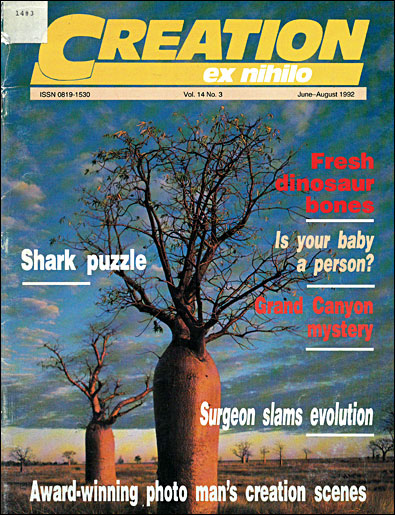Sharks and rays: fish with no ancestors
Sharks and Rays are causing problems. I don’t mean the fear of being bitten or stung if you swim in the waters they inhabit. I mean that if you’re committed to a belief in evolution, sharks and rays will be causing you other problems as well.

You see, evolutionists have absolutely no evidence of what sharks and rays evolved from. The best they can hope for is that the lines of evolution of these creatures ‘remain to be discovered’.1 Not that they have indisputable evidence for the evolution of other major kinds of creatures either, but sharks and rays are particularly unkind to evolutionists.
The reason is that sharks and rays are cartilaginous fishes. This means that instead of bone in their skeletons they have cartilage—lighter and more elastic substance that has not fossilized like bone. The gristle found in meat is cartilage. (Another type of cartilaginous fish is the chimera, or ghost shark, which belongs in a sub-class all its own.)
But don’t infer that because cartilage has not fossilized there might have been ancestors of these creatures which simply haven’t left any trace. Ancient sharks and rays are well known particularly from their teeth and scales, which have fossilized. And from what has been found in the fossil record, it is obvious that the ‘ancient’ cartilaginous fishes were little different from those around today.2
‘Right from the start’, a British evolutionist fish expert admits ‘their separation into shark-like fishes (Elasmobranchs) and chimaera-like fishes(Holocephalans) is already established, so that some common ancestor must have lived still earlier.’3
That ‘common ancestor’, you would have realized, is only an assumption on the part of evolutionists. They have no physical evidence that it ever existed.4 They are not even sure how sharks, rays, and chimaeras are related.’5 They simply group these fishes together because they are all cartilaginous rather than bony.6

A spotted ray from Australia’s Great Barrier Reef
They might all be cartilaginous, but sharks and rays in particular are very different in other ways. To start with, most look nothing alike. A ray’s body is flat, but a shark’s body is somewhat cigar-shaped. Sharks have free upper eyelids—no ray has these. And sharks swim by thrashing their powerful tails from side to side, whereas rays flap their wing-like pectoral fins up and down to glide through the water. And so on.
Breathing is different too.
The shark’s method of breathing is to draw in water through the mouth, pass it over the gills, and eject it through slits. But rays are generally bottom-dwellers. If they drew in water this way it would be full of sand, mud and grit, which would clog their gills. So they have an opening behind each eye on the top of their head, which draws in clean water and takes it straight to the gills. It is then ejected through gill-slits on the ray’s underside.7 With no proof that sharks and rays have evolved from a common ancient ancestor, and considerable evidence against it, the alternative explanation—that they were created separately and intact by God in the beginning—seems a much more reasonable explanation.
References
- Encyclopaedia Britannica, Encyclopaedia Britannica, inc., Chicago, 1991, Vol. 19, p. 212. Return to text.
- Peter Whitehead, How Fishes Live, Gallery Press, Leicestor (England), 1977, p. 148. Return to text.
- ibid. Return to text.
- Linda Gamlin and Gail Vines(eds), The Evolution of Life, Guild Publishing, London, 1986, p. 95; also, ref. 1, p. 212. Return to text.
- Ref. 1, p. 212. Return to text.
- Ref. 1, p. 208. Return to text.
- David Attenborough, Life on Earth, Reader’s Digest services, Sydney (Australia), p. 133. Return to text.


Readers’ comments
Comments are automatically closed 14 days after publication.